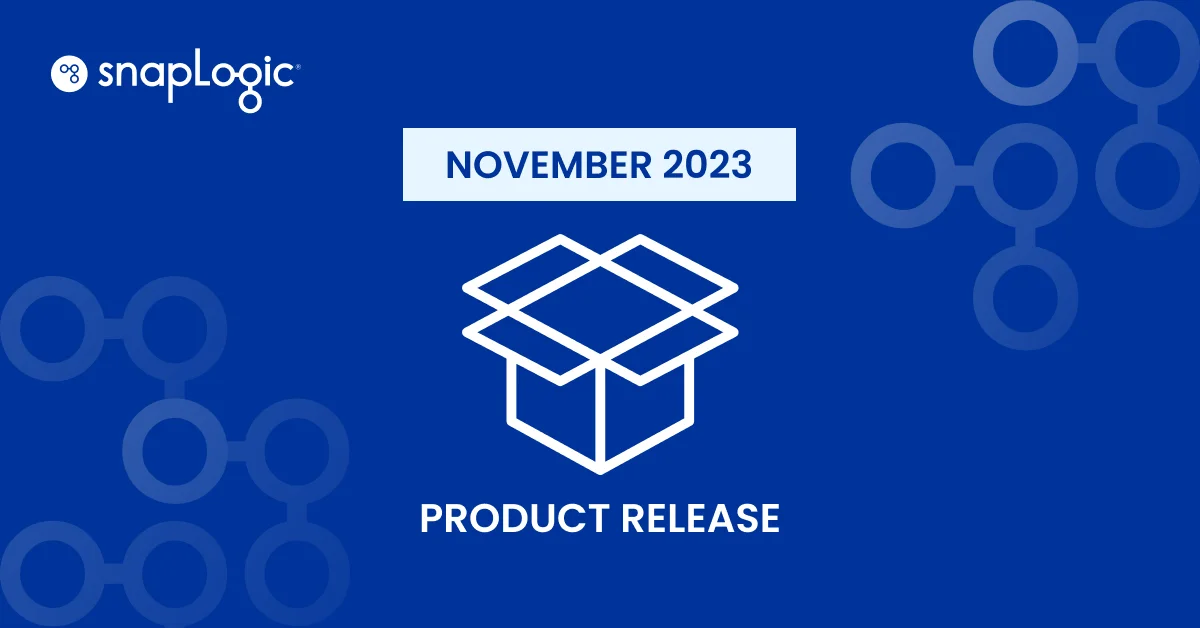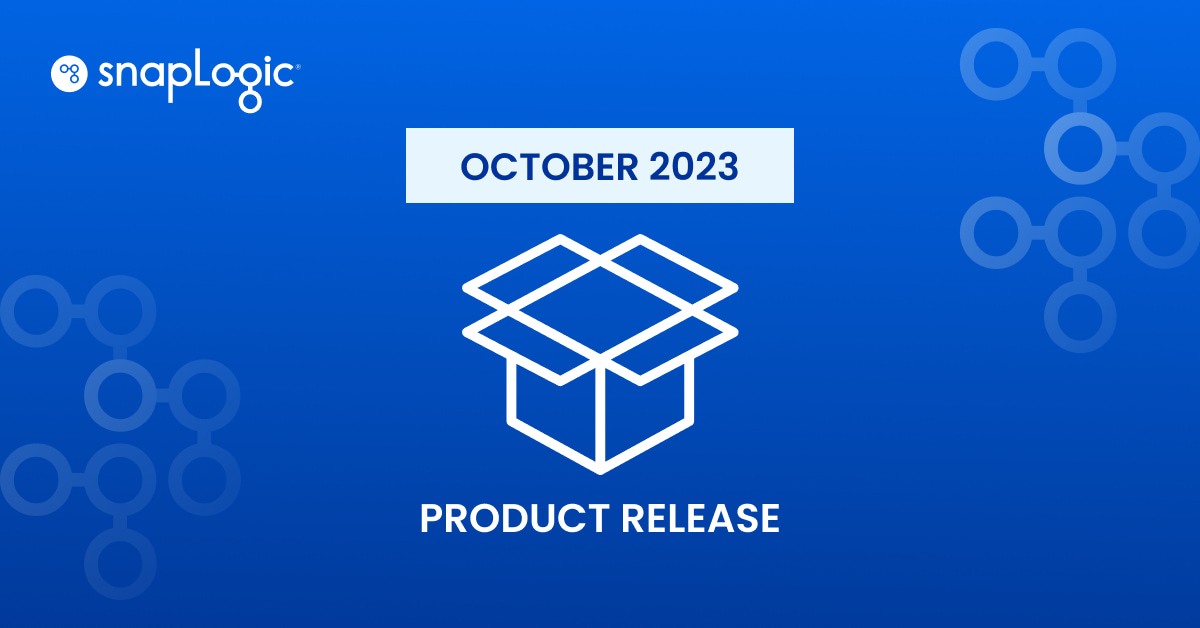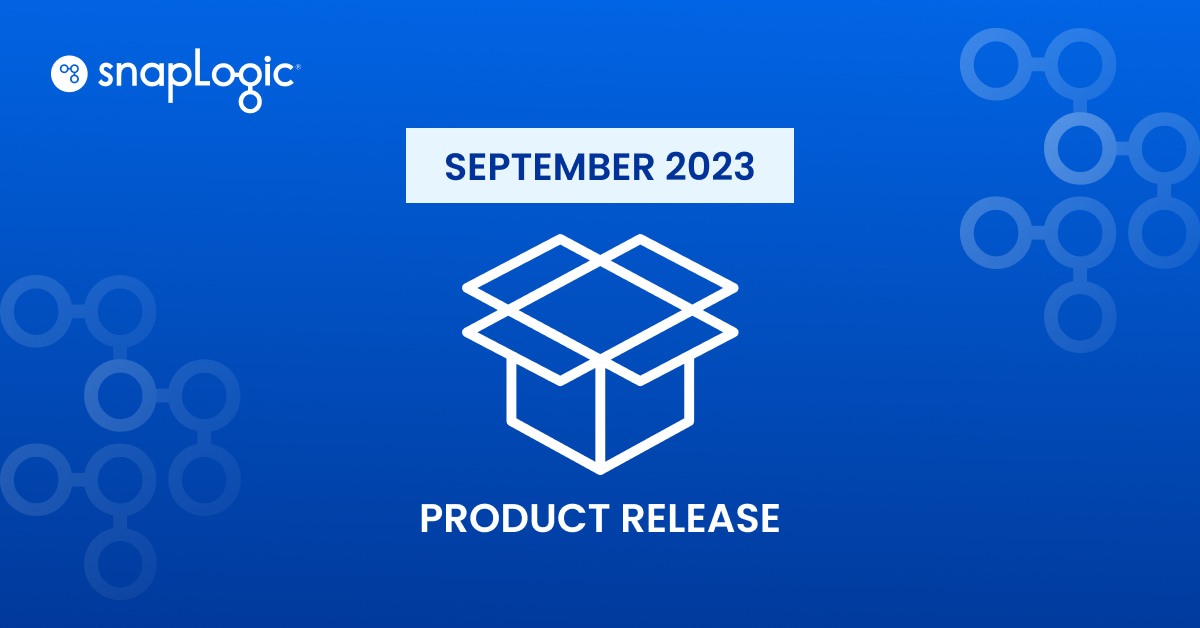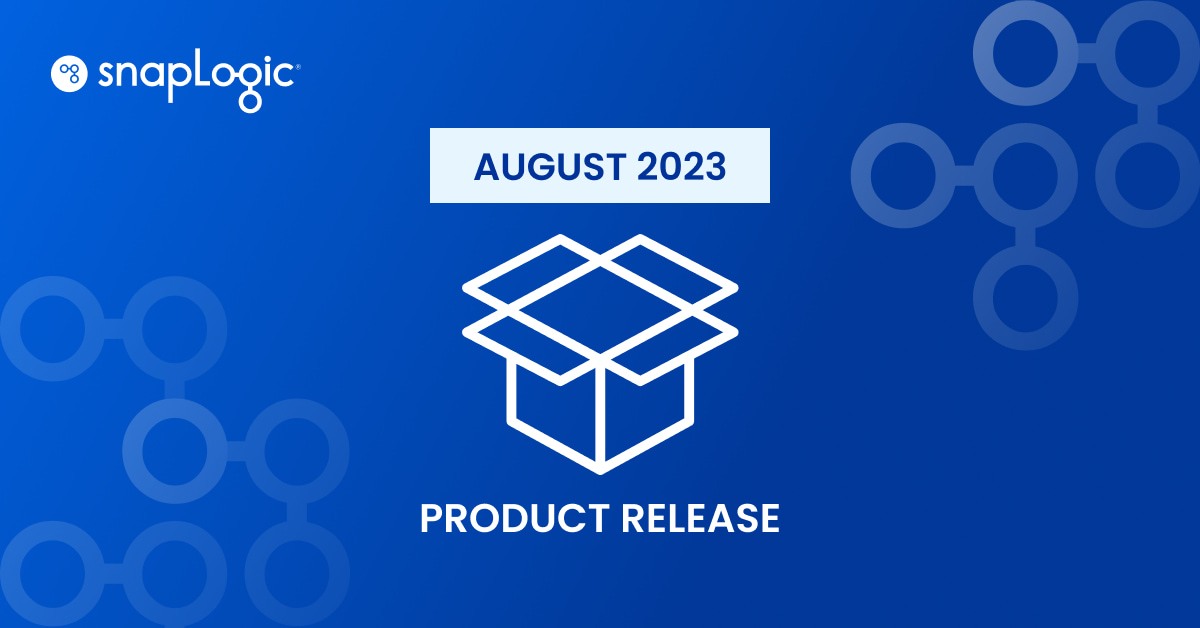We are thrilled to share SnapLogic’s November Release with you. It includes more enhancements from the world’s first generative integration solution, which improves productivity, provides enhanced connectivity, simplifies management, and helps you improve your security posture. With this release, you can:
- Write SQL queries quickly with enhanced text-to-SQL using SnapGPT
- Only load the data you need into the target CDW with column filtering in AutoSync
- Securely connect Cloudplexes to your AWS data and apps
- Modernize finance automations with the new NetSuite REST Snap Pack
- Improve API security with support for Mutual TLS and JWT-based authentication
And so much more. Let’s see how these changes will revolutionize how you automate workflows and move data!
Write SQL queries simply with SnapGPT
We launched SnapGPT back in August and we saw a lot of our early adopters leverage it to generate SQL queries to interact with databases and data warehouses. With the November release, we have made this capability more robust, and added a new SQL editor preview panel that allows you to modify the query as well. You can simply provide a prompt to SnapGPT to generate a SQL query and then apply it to any Snap that has a SQL query box.
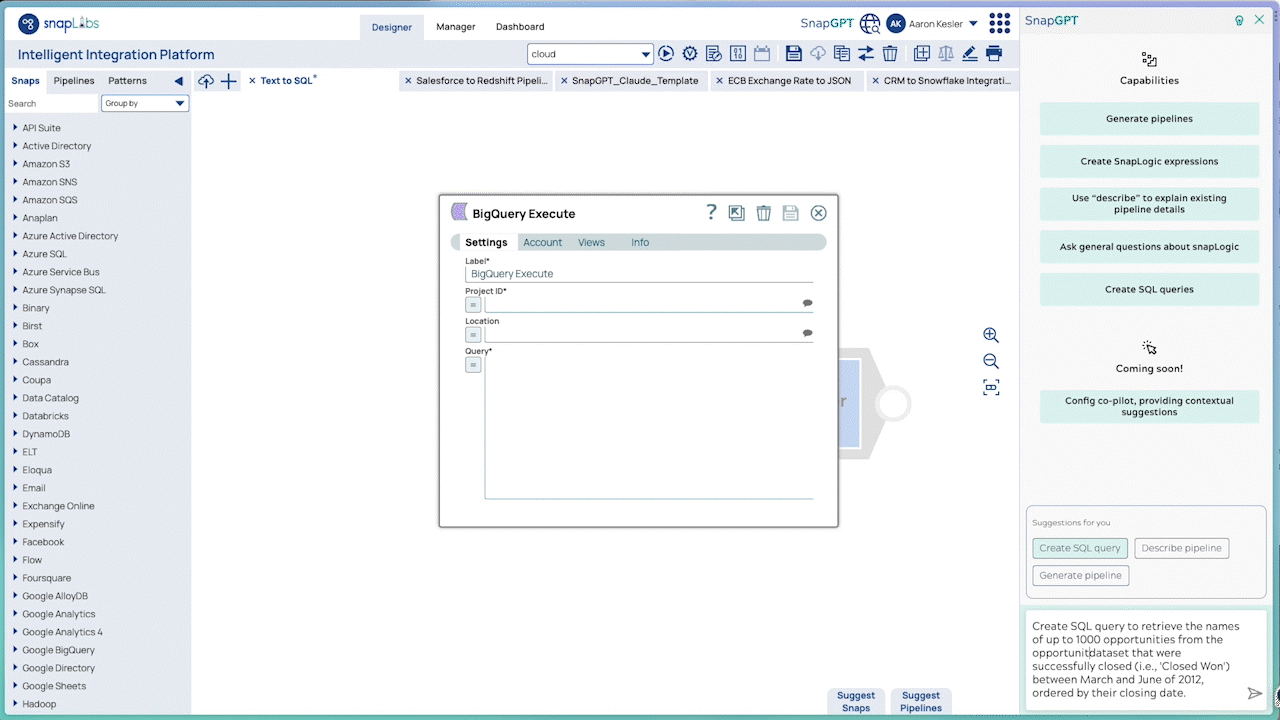
Easily transform data with AutoSync
We started our AutoSync journey with data loading capabilities to databases and data warehouses. Now we are embarking on the next phase of empowerment for data and business analysts by adding transformation capabilities to AutoSync, similar to those that you see in our AutoPrep feature.
With the November 2023 release, we are adding column filtering capabilities so that you can load only the data you need to a target cloud data warehouse. With that capability, you can save on both data movement as well as storage costs.
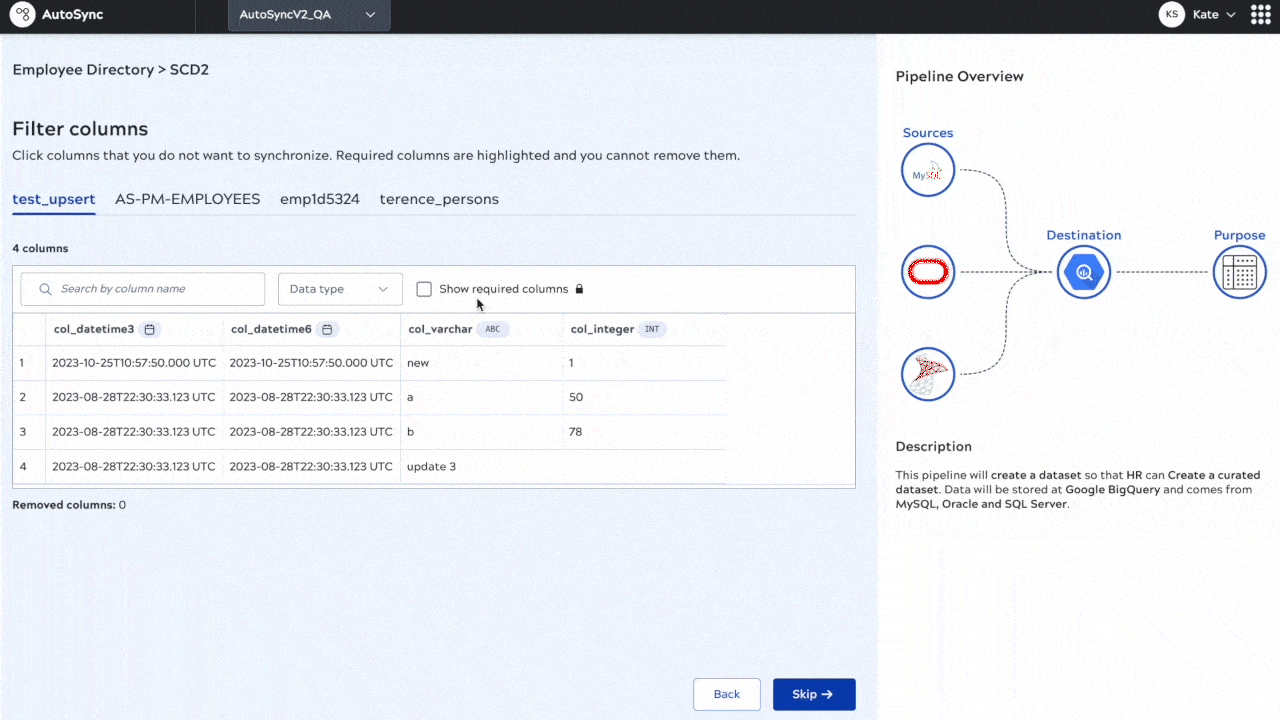
Other updates to AutoSync include the addition of new sources and destinations. We have added Google Analytics 4 as a source endpoint so that you can analyze your website traffic and content usage. On the destination side, we have added on-premises Oracle and Microsoft SQL Server so that you can leverage AutoSync to move data to them as well.
Securely connect Cloudplexes to AWS-based data and apps
We are really excited to introduce the ‘Cloudplex secure connectivity’ feature into Public Beta. With this feature, you can securely connect AWS-based, SnapLogic-managed Cloudplexes with data and applications in your AWS Virtual Private Network (VPN) behind your firewall using AWS PrivateLink. This feature removes the need for you to manage and maintain Groundplexes helping your simplify operations.
You can create up to 3 connections to each Cloudplex and easily monitor and manage these connections with the Cloudplex secure connectivity screen. To learn more about how you can set up secure connectivity to your Cloudplex with AWS PrivateLink, please check out this video.
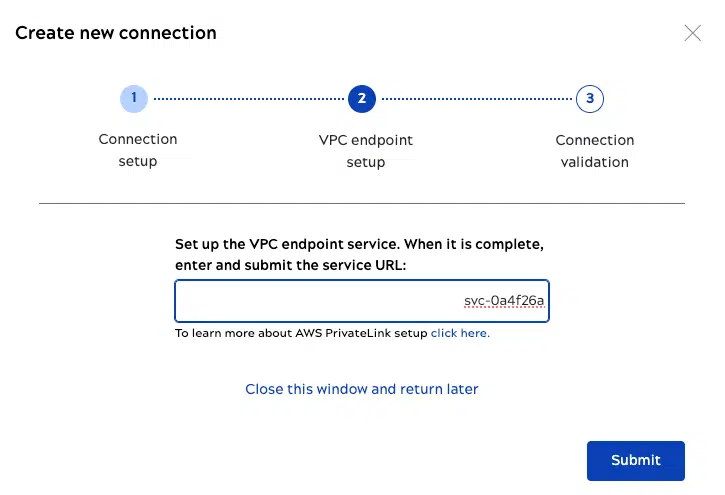
Use ‘memory-optimized’ nodes for workflows with complex transformations
With the November 2023 release, we are introducing a new node type called Memory Optimized nodes. These nodes provide a higher ratio (vCPUs to Memory) of 1:8 as opposed to 1:4 of the standard nodes.
You can leverage these new node types for data pipelines that need to move large amounts of data for data mining, for bulk loads into data warehouses or databases, or for full load migration from one system to another. You can also use them for workflows where you need to do complex transformations such as data aggregation, sort, and joins for data analysis and machine learning.
The new memory-optimized node provides better price/performance for workloads that require higher memory and help you avoid low memory situations when running these critical workloads. To learn more about this new node type, please reach out to your customer success manager.
Modernize finance automation with NetSuite REST
For years, NetSuite’s SOAP APIs have powered the automation of quote-to-cash, procure-to-pay, and other finance processes. With this release, we are adding support for more modern REST web services through the NetSuite REST Snap Pack.
This Snap Pack adds Read, Execute, and Search functionality, and the ability to Create, Update, and Delete objects is coming very soon. The Snap Pack supports both an Access Token account as well as an M2M OAuth2 account.
Check out this demo to see how you can leverage NetSuite REST to automate business processes.
Other key Snap Pack updates are as follows:
- HTTPClient Snap Pack now supports Google service account authentication so that you can easily connect to Google Services such as Google Compute Engine, Google Analytics
- The default driver for the Oracle Database has been upgraded from v11.2.0.4 to 19.20.0.0. Please keep in mind that this driver upgrade is backward compatible but changes specific status codes and error messages
Enhance API discovery for external users
External users are able to now view the API catalog and API documentation in the developer portal without logging in. This lowers the barrier to API discovery and will allow interested API consumers to view APIs without logging into the developer portal.
However, API consumers must log in in order to subscribe to APIs in the developer portal. They must also be logged in to be able to create applications (subscribe and combine multiple APIs from the developer portal).
Improved security with mTLS from API gateway to the backend (southbound flow)
As the first part of introducing mutual TLS capabilities to the SnapLogic API Manager, users can now enable mTLS in the southbound direction (SnapLogic API gateway to backend services).
As a quick refresher, about mutual TLS, both the client and server have a certificate, and both sides authenticate using their public/private key pair. Compared to regular TLS, there are additional steps in mTLS to verify both parties (additional steps in bold):
- Client connects to server
- Server presents its TLS certificate
- Client verifies the server’s certificate
- Client presents its TLS certificate
- Server verifies the client’s certificate
- Server grants access
- Client and server exchange information over encrypted TLS connection
In this case the client is the SnapLogic API gateway and the server is the backend service.
In the following releases we will introduce mTLS for northbound flow (i.e. web app to API gateway).
Improved security posture with JWT token signature validation on API proxies
Whenever an API consumer makes a request to a SnapLogic API (that is managed with SnapLogic API Manager), the consumer must use their JWT credentials to sign their JWT. Before allowing API access to the consumer, the following sequence of events must happen:
- Check if the JWT token is valid
- If verifiable: Execute request
- If not verifiable: Discard request
This allows you to confidently manage APIs through the SnapLogic API Management layer and expose these APIs to consumers who may be internal or external to your organization.To learn more about the November Release, please check out the release notes or contact the customer success team.






